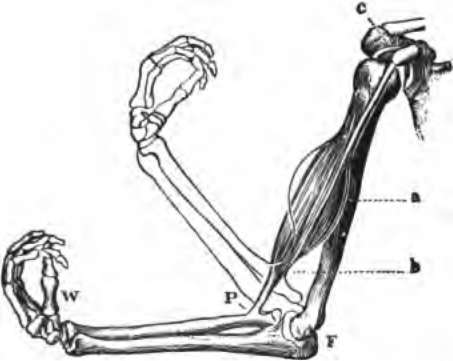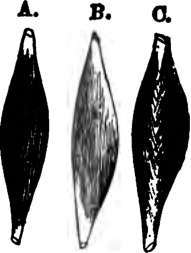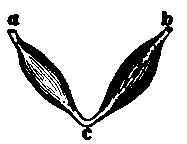The Origin And Insertion Of Muscles
Description
This section is from the book "The Human Body: An Elementary Text-Book Of Anatomy, Physiology, And Hygiene", by H. Newell Martin. Also available from Amazon: The Human Body.
The Origin And Insertion Of Muscles
Almost invariably that part of the skeleton to which one end of a muscle is fixed is more easily moved than that part on which it pulls by its other tendon ; the less movable attachment is the origin, the other the insertion of the muscle. Taking the biceps of the arm, we find that when the belly of the muscle contracts and pulls on its upper and lower tendons, the result is commonly that only the forearm is moved, the elbow joint being bent as shown in Fig. 29.

Fig. 29. The biceps mnscle and the arm-bones, to illustrate how, under ordi-nary circumstances, the elbow joint is flexed when the muscle contracts.
How may its thickening be recognized? What change besides thickening and shortening occurs in the belly of a contracted muscle? Give an example.
What is meant by the origin of a muscle? What by the insertion? Give an example.

Fig. 30. Diagrams illustrating, a,typical mus-cle with a central belly and two terminal tendons, b, a penniform muscle; c, a bipenniform muscle.

Fig. 31. A digastric muscle.
The shoulder is so much more firm that it serves as a fixed point, and so that end of the biceps is the origin of the muscle, and the radial attachment its insertion. The distinction is, however, only relative : if the radius were held immovable the muscle would move the shoulder towards the radius, instead of the radius towards the shoulder; as, for example, in going up a rope " hand over hand".
Continue to:
